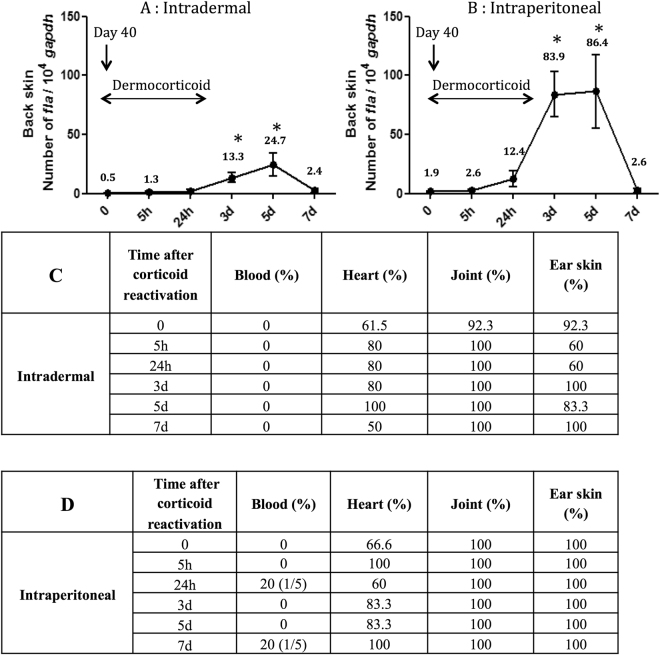Figure 2.
Application of the dermocorticosteroid clobetasol to the skin of chronically infected mice increased the Borrelia spirochete abundance in the mouse skin. Mice were infected with Borrelia burgdorferi ss strain N40 via (A) intradermal or (B) intraperitoneal inoculation. At 40 days post-infection, the mice were treated with clobetasol for two days. At different time points following the clobetasol treatment (5 h, 24 h, 3d, 5d, 7d), the mice were sacrificed and the mouse skin where the dermocorticosteroid had been applied was excised. The Borrelia load in the mouse skin was estimated using qPCR for seven days. Different mouse organs were tested by culture for seven days to determine the presence of Borrelia. Tissue biopsies that yield spirochete-negative cultures were retested using qPCR. The blood remained spirochete-negative over the duration of the tick blood meal, with the exception of two mice in the intraperitoneal group. The asterisk (*) indicates time points where the spirochete load is significantly higher (p < 0.05) than the base line (t = 0).

